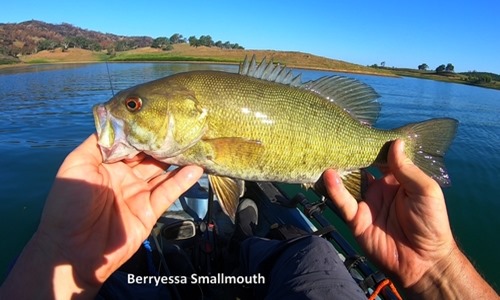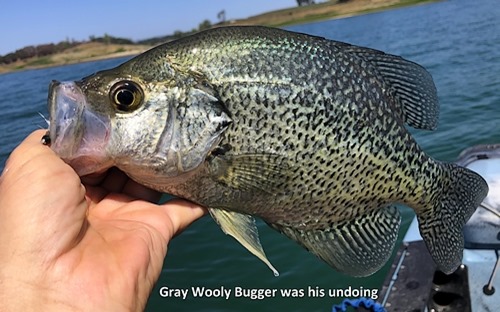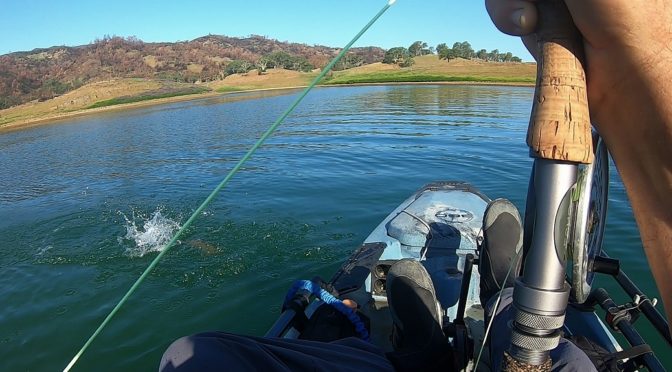Conditions: Air temperature 55 degrees in the AM, 77 degrees in the afternoon. Light northerly breeze, 5-10 mph. Water temperature measured at Oaks Shores of 62 degrees (AM), measured at Big Island 64 degrees (PM).
I retraced my earlier Berryessa outing and noted the last couple of weeks of warm weather is reflected in the water temperature. In the last two weeks, surface temperatures are up three degrees, and the lake has dropped an additional five feet, consistent with tomato production.
Yep, all that Ketchup has to come from somewhere …
The last couple of weeks the valley has been planting in earnest. Bell Peppers, Tomatoes, and new Almond orchards are materializing as fast as the tractors can plant them, and the canals brim full of water necessary to get plantings to take root, so water use is up.
The talk in the parking lot are how fewer Kokanee are biting and the casual trolling anglers are starting to thin as well. Less lake volume and warmer weather and we’ve got the recipe for the Kokanee to head deep and the bass to come shallow, and yours truly gleefully stomping the daylights out of anything fool enough to eat an artificial.
Three degrees meant the Smallmouth bite is akin to Indian Valley. “Smallies” were in the shallows and giving chase, with nary a Largemouth to be seen. The same flies were dominant, and only the terrain mattered – as Smallmouth tend to prefer rocky areas and are largely absent on the muddy or sandy parts of the lake.

No Catfish this time, but I did manage to land a big “Chunk” of a Crappie. These are always welcome given they’re a scrappy fighter with a soft mouth, and also great table fare if you get into a school of them.

The Gray Wooly Bugger is quickly becoming the “go to” pattern for all of these lakes – and it’s not terribly surprising given how the predominant food source is Threadfin Shad. I am casting downwind to increase distance, waiting a bit (to unravel tangled running line) and then stripping the fly back in pulls ranging from six inches to a foot. I have 20 turns of two amp fuse wire on the fly with a 4mm bead, and the combination gives it an aggressive sink rate … likely about six inches per second.
My leader is also assisting a bit, as it is designed for these heavy flies. I have a short butt section (about 40”) comprised of equal segments of 50, 40, and 30lb monofilament. I tie a Surgeon’s Knot at the end of the 30 lb to make a loop to attach the tippet. I use about five foot of 15lb fluorocarbon (Seaguar –I am testing it this season), to aid the sinking fly. The long tippet allows the fly to sink very quickly as it is thinner and offers less resistance to the fly pulling it under. This is similar to many of the leaders I make, and takes its inspiration from the Golden Gate Angling & Casting Club’s tournament leaders used in ACA events.
The combination is allowing me to consistently get five or six feet into the water column with a floating line – an important option considering the top water bite is synonymous with Spring Spawn and the ensuing festivities. Flopping between the deep and the surface is a lot easier when limited to fly change only – versus spool swap or second rod.

